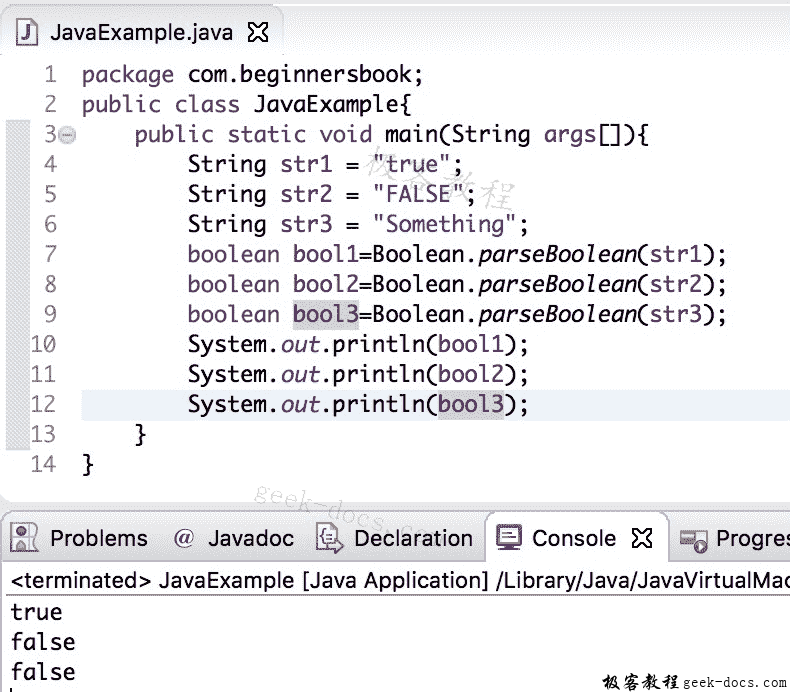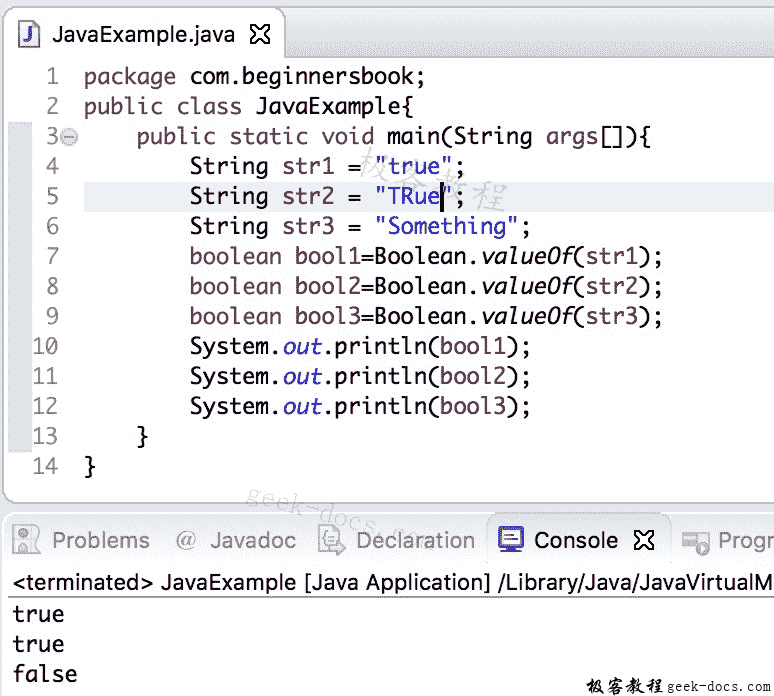在本指南中,我们将在示例的帮助下,看到如何将String转换为布尔值。
将String转换为布尔值时,如果字符串包含值"true"(大小写无关紧要),则转换后的布尔值为true,如果该字符串包含任何其他值,那么转换后的布尔值将为"false"。
使用Boolean.parseBoolean()方法将String转换为布尔
这里我们有三个字符串str1,str2和str3,我们使用Boolean.parseBoolean()方法将它们转换为布尔值,此方法接受String作为参数并返回布尔值true或false。如果字符串的值为"true"(在任何情况下为大写,小写或混合),则此方法返回true,否则返回false。
public class JavaExample{
public static void main(String args[]){
String str1 = "true";
String str2 = "FALSE";
String str3 = "Something";
boolean bool1=Boolean.parseBoolean(str1);
boolean bool2=Boolean.parseBoolean(str2);
boolean bool3=Boolean.parseBoolean(str3);
System.out.println(bool1);
System.out.println(bool2);
System.out.println(bool3);
}
}
输出:

使用Boolean.valueOf()的String到boolean转换
在这里,我们将看到另一种方法,我们可以使用它来进行字符串到布尔转换。与Boolean.parseBoolean()方法类似,Boolean.valueOf()方法接受字符串作为参数,并返回布尔值true或false。
public class JavaExample{
public static void main(String args[]){
String str1 = "true";
String str2 = "TRue";
String str3 = "Something";
boolean bool1=Boolean.valueOf(str1);
boolean bool2=Boolean.valueOf(str2);
boolean bool3=Boolean.valueOf(str3);
System.out.println(bool1);
System.out.println(bool2);
System.out.println(bool3);
}
}
输出:

 极客教程
极客教程